Mixing guitars is such a deep topic that there’s always something new you can learn to help get bigger, phatter guitar tracks.
Our guitar mixing tutorial will help you get the guitar sound in your head out into the mix quickly and efficiently.
#1 Pan first, detailed guitar mix work last
One excellent tip for mixing guitars is to start by setting the pans on all your mix channels. After that, get each of them to sound roughly how you want them to sound (in terms of tones and plugins), and only then start making the finer adjustments on individual guitar tracks.
Why? If you start doing the fine detail work on your guitar part when nothing is panned yet, then once you pan and mix the other parts, you’ll have to redo all the fine work again on the guitar part.
This is because the guitar part will sound totally different once everything else has been so heavily adjusted. So save yourself the trouble and get the rough pan and sounds right on everything before doing the mixing surgery.
#2 Clean up your guitar parts with EQ cuts
The guitar is a mid-range instrument, so when mixing guitars, EQ cuts on the low-end and possibly on the high-end can help the tracks sit much better in the mix.
You’ll usually want to cut the lows approximately between 80 and 150 Hz to remove unwanted noise and cut the highs above 10 to 12 kHz to eliminate useless fizz.
Such cuts enable the bass guitar and kick drum to fill out the low-end as they should, without competing with an unnecessary boomy low-end on the guitar, muddying things up.
The same is true for letting the vocals and cymbals have room to shine in the high-end.
If you listen to some isolated guitar tracks of legendary songs on YouTube, the individual guitar tracks are often surprisingly thin-sounding, particularly the leads and solos. This is because the engineer kept the big picture in mind when setting the EQ.
#3 EQ sweep guitar tracks to find trouble spots
To find trouble spots with your EQ, sweep around with a sizable boost (or cut) with a narrow Q to find the offending frequencies.
Using the audition function on an EQ which only plays the frequencies within the Q is also very useful to use in tandem with this process.
As a starting point, you can use the following as a very rough EQ guide for electric guitar:
- 80 Hz and below: Cut the rumble
- 100 Hz – 350 Hz: Can add warmth and fullness
- 2-3 kHz: Pick sound. Also a potential area for harshness.
- ~4kHz & ~6 kHz: Nails on chalkboard & static. May benefit from surgical cuts.
- 10 kHz+: You may want to cut above this, no fundamentals
#4 Compression: Strictly optional on distorted guitars
Compression is a very handy tool for clean guitars to make them stand out in a mix, as they’ll often struggle to do so without it. For funky clean guitar parts, in particular, it’s a key tool to get them to cut right.
But for distorted or overdriven guitars, compression is very much optional.
Compressing distorted guitars can indeed be useful for certain applications. You can use a comp with a fast attack to even out playing dynamics where required.
Or you can use multiband compression on heavy guitars to tame the low-end and low mids. This is an alternative approach to using EQ for this task but using a compressor is more responsive to the playing rather than a one-size fits all EQ cut.
But don’t just automatically slap on a compressor on distorted guitars like you might for drums. Distortion itself already heavily compresses the guitar track, so unless you’re trying to achieve a specific result by using compression, you may want to leave it off.
#5 Work out how many tracks are needed
If you want to know how to make guitars sound bigger in a mix, one of the key tricks is arranging multi-tracked guitars correctly.
What is required here will depend on the details of your song. If it’s a lighter song with piano and strings, then perhaps a single guitar track will suffice.
Most modern songs will have multiple guitar tracks, however. A typical guitar-based song would have dual rhythm guitar tracks panned left and right and perhaps dual lead guitar tracks, in addition to a single guitar solo track.
When double-tracking guitars, you’ll want to go easy on the distortion.
The typical rule is the more guitars, the less distortion.
This guitar mixing tactic allows you to retain clarity in the mix. If you bump up the gain too much, the entire song will become a big fizzy mess.
You can save time by putting any effects you want to add to these multiple guitar tracks onto a bus.
#6 Don’t overdo the distortion
More distortion is always better, right? 🤘
Well, not quite. While playing live, you can probably get away with going ham on the gain. In the cold light of the studio, your mix will benefit from taming your inner Spinal Tap.
When recording distorted guitars, adding gain adds thickness to a point But, beyond that, it just adds fizz and robs the mix of definition and power.
A good general rule is to add as much distortion as is strictly necessary to get the tone and sustain you want, but not any more beyond that.
Think of a record with truly great and huge-sounding guitar tracks. If you listen to it closely, a lot of the time, you’ll find the level of distortion used is not all that crazy.
#7 Secret guitar mixing sauce: Make the drums loud!
If you want to know how to make guitars sound bigger, here’s a secret: Mix the drums loud!
It may sound counter-intuitive, but having the guitars be the loudest thing in the mix actually just makes everything else sound weak rather than making the guitars sound huge.
And by “mix the drums loud,” I mean the drums, like kick, snare, and toms. Having loud cymbals often just adds noise rather than making things sound big.
Still not convinced?
Listen to a song produced by a guitarist, like Dream Theater’s “False Awakening Suite” from their 2013 self-titled record. The guitars overpower everything, making the drums sound tinny and unimpressive.
Compare that to Dream Theater’s “The Dance of Eternity” from Metropolis Pt 2: Scenes from a Memory, when the drums are mixed nice and loud, and the guitars are at a more reasonable volume. Which song sounds heavier?
Or, for the ultimate example of how loud drums can make guitars sound huge, just put on Metallica’s “Sad But True.”
#8 Busses = better workflow
Busses involve you sending multiple individual channels together into a single auxiliary channel. Then you can apply plugins to that single bus that affects each of the individual channels at the same time.
When mixing guitars, this is very useful as effects that you want to add to multiple guitar tracks. You can simply send them to a bus and add the effect there.
This improves your workflow and enables making changes to your guitar tracks a lot more efficiently, as well as using fewer CPU resources.
#9 Different tones = more depth
If you’re wondering how to make guitars sound bigger, one trick to add depth and power to multi-tracked mixes is by varying the tones and effects on each guitar track.
You can even change out guitars and amps for more variety.
Having different tones on different guitar tracks (for example, on a left and right rhythm track) sort of tricks the ear into perceiving the whole thing as bigger and wider.
#10 Sack the solo button to get a balanced guitar mix
This is a big one. When mixing guitars, don’t solo the guitar part and go to town. You want to spend most of your time mixing within the context of the full mix.
Why? Because you need to be able to see the forest from the trees.
You can spend an hour tooling away at a soloed guitar track until it sounds like James Hetfield on steroids, but when you take it off solo, it will sound nothing like what it sounded like before and often won’t work that well within the mix.
This is because when you’re working on a soloed track, you have the full frequency range to work with. But once you have the full mix in, the low and high end will start fighting with other instruments in the same frequency range, and you’ll lose the power of the soloed track.
Do you have any additional guitar mixing tips you’d like to share with fellow BPB readers? Feel free to post them in the comments section below.
Return to our mixing music guide for more information.


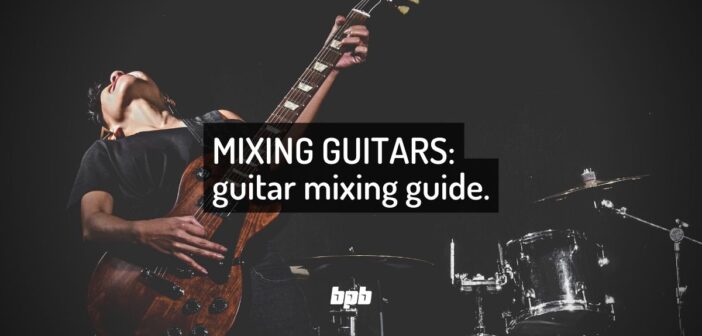
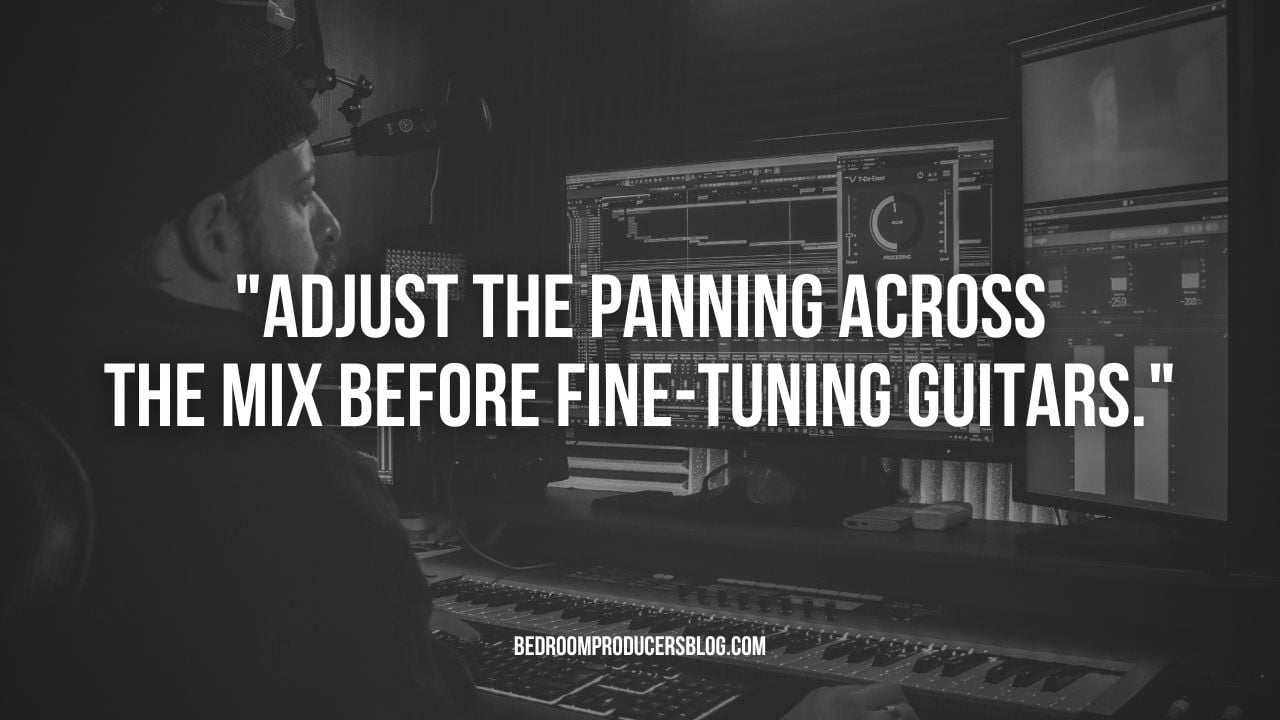
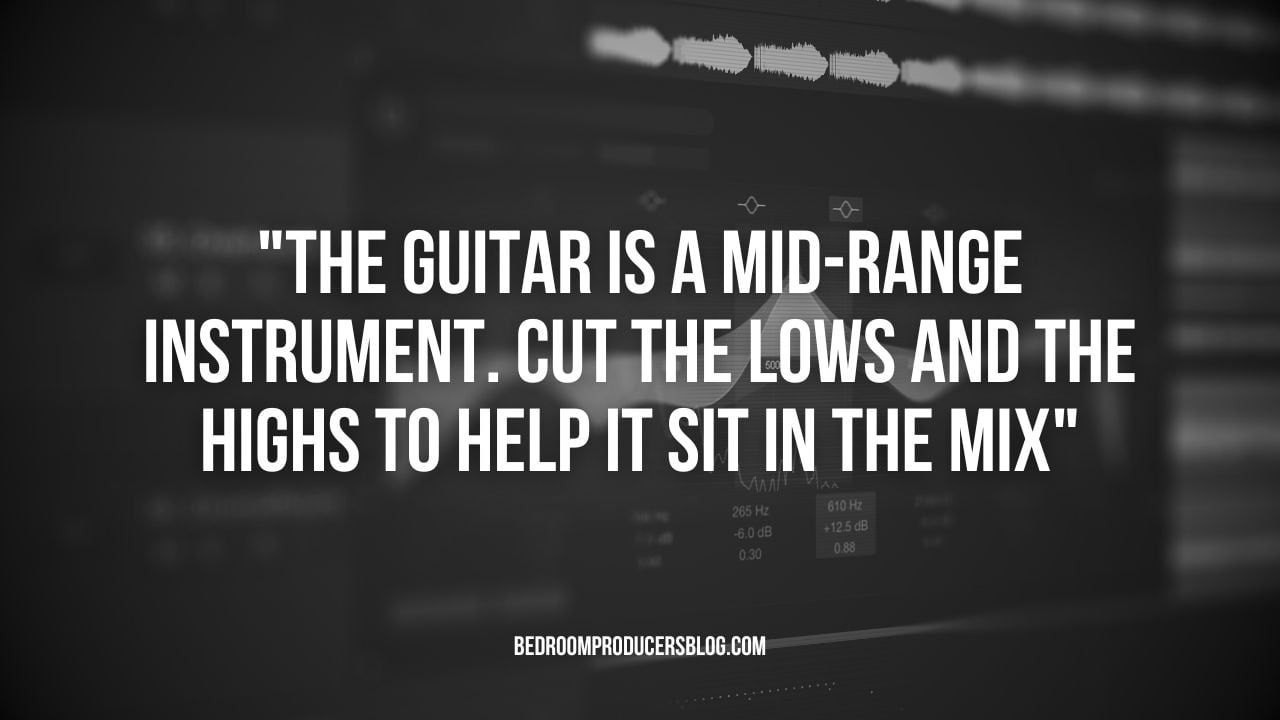
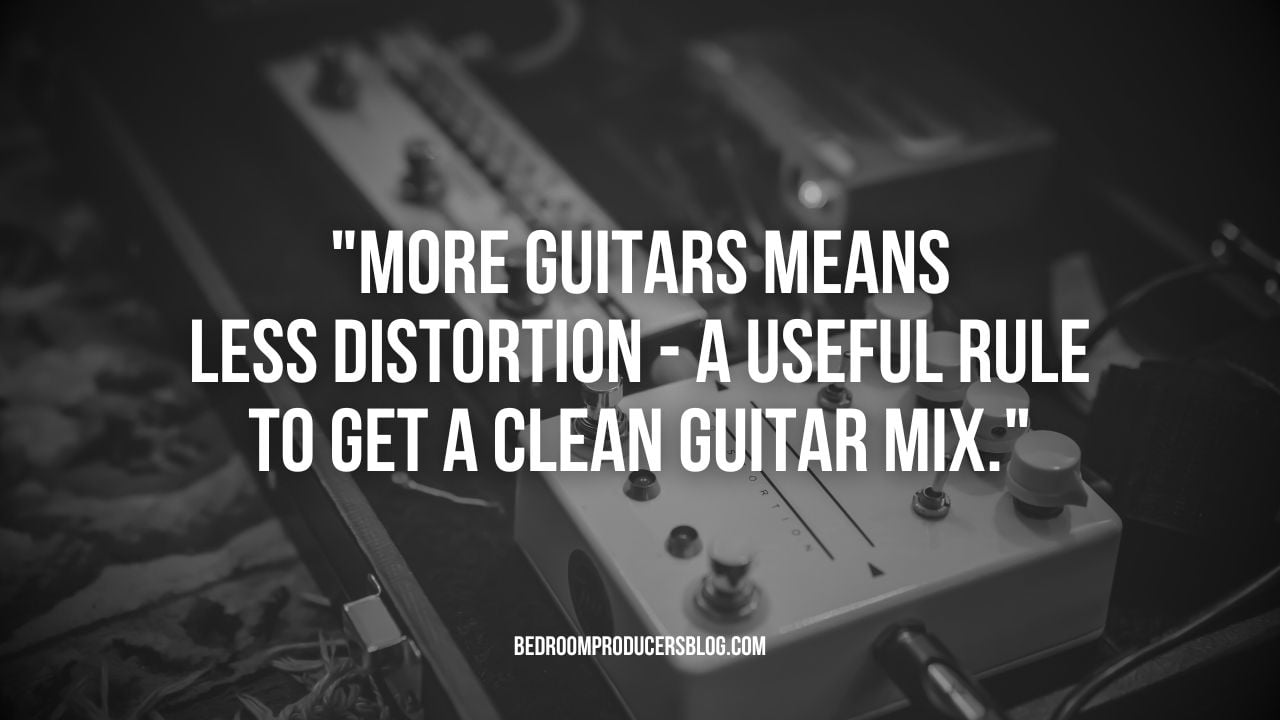
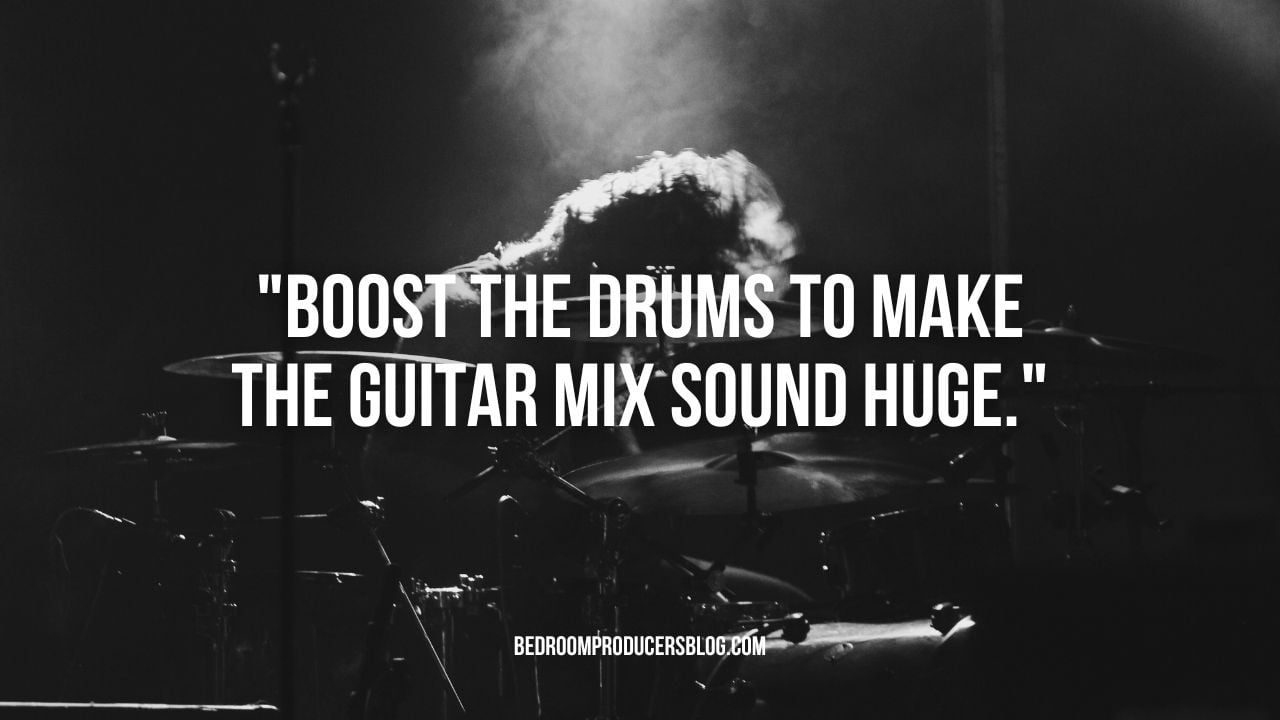
17 Comments
ASJ
onFunny how the user base requested more guides/tutorials, yet these posts on the blog get the least engagement. Is it the same on socials?
Tomislav Zlatic
onThere were more comments on the previous tutorials. Maybe mixing guitars isn’t such a hot topic, but I still think the article is useful. :)
Either way, more tutorials coming soon!
Duarte Guerreiro
onThat was a huge tutorial about guitar mixing, thanks a lot for the explanation ☺️🎸
Tomislav Zlatic
onThank you, glad you enjoyed it! Is there any other tutorial you’d like to see on BPB?
BGB
onI never comment on this website. I hardly leave comments in general. I’m commenting today because I hope they keep writing these. This is great material guys!
Also, I appreciate what you guys do on the regular Bedroom Producers!
Tomislav Zlatic
onHey, thank you so much! That’s wonderful to hear. More tutorials are in the works. If there’s any particular topic you’d like to see covered, feel free to ask here. Thank you for reading BPB!
Milos V. Milosevic
onThis tutorial is a real gem, a compilation of the key points which makes a difference. Very informative, yet sufficiently clear and simple. Thank you for publishing this.
I would add few things that might be usefull:
1. When building distortion, use few stages (just a start of a breakpoint of amp and a bit of boost on dist pedal and some more compression on compressor if needed) rather than max out distortion in one stage (amp or pedal). It enables sustaine while guitar voice remains clear and not fuzzy.
2. On digital equipment, like modeling processors, high/low cuts might be even more radical (140 hz – 7.000 Hz)
3. Dynamic EQ is a marvelous tool to find and cut nasty spots and make your guitar better fitting in the mix. TDR Nova is one of these.
Tomislav Zlatic
onHi Milos, thank you for your comment. :) Great tips, and yes, TDR Nova works great for cleaning up guitars.
alex
onAbout #3: everything will sound horrible boosted by 15db with a narrow Q, especially in isolation. When you sweep for offending frequencies, you’re gonna find some, every time. So, that’s generally a bad and wrong advice that’s been around for years. If something sounds bad, in the mix, then sweep for it, if you don’t know where it is. Also, I ruined a fair number of guitars (and kicks, for that matter) by routinely removing too much of the low mids in my day. There’s a lot of energy there. Nowadays, I don’t even touch the eq before I make a quick, rough mix. Once I have the rough levels, I listen to what’s too much or not enough. Sure, sometimes, low mids need to be cut, but not always and certainly not on every track.
If the guitars are overpowering the lead vocal, the solution is to use a dynamic eq, triggered by the lead vocal, to duck
the frequencies that mask the vocal. That way, they’re only removed while the singer is actually singing.
Also, baby boosts and cuts with a narrow Q (on single channels) bring nothing to the mix. Relatively wide boosts and cuts with few bands bring the mix together much quicker and in a right, more musical way.
Finally, not all the instruments can and should be equally featured all the time. That’s why volume automation is so
important and powerful. Just my .02.
Matthew
onNewb here, but I can testify to the power of dynamically reducing the mids masking the vocals and volume automation!
Tomislav Zlatic
onWelcome, and thank you for the tip! Volume automation is a big one. Requires manual work, but provides fantastic results.
Simon Taylor
onGreat article. Keep it simple and get the best sounds you can outside of the computer and there will be less to do in the mix.
Billy Decker, mix engineer and the co-author of my book ‘Template Mixing and Mastering’ treats electric guitars exactly the same each time – he puts and EQ on with the same start curve (below) and then a clipper and limiter to make them big – that’s it!
EQ
+2.1 db 100hz shelf
+1.8 db 240hz parametric bell shape, medium Q
+4.5 db 7kHz shelf
Then adds a clipper plugin and a limiter to make it loud! That’s it. He’ll pan 100% left and 100% right and keep them dry a lot of the time or maybe add a touch of delay and reverb, nothing more – and he’s mixed 16 no.1 US singles! – that’s the sound on them.
Don’t know if Tomislav can recommend a free clipper (if there is one), plenty of great free EQ’s and Limiters.
Tomislav Zlatic
onI am currently working on an article about free clippers – going live next week! :)
Simon Taylor
onFantastic. Thanks Tomislav, look forward to it!
cosmo | among the stars
onReally insightful article! Working on one of my most guitar-heavy tracks right now and this was really helpful :)
KucingLiar.music
on“Mix the drums loud”.
YES!!!
Essen
onAwesome! Thanks